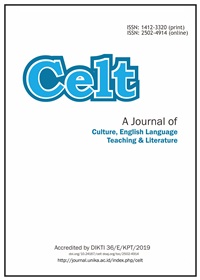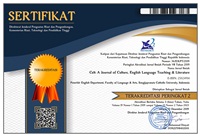Photo Story-Telling of South Amarasi Folklore: A Strategy to Enhance English-Speaking Skills in Young Learners
Abstract
This study investigates the impact of South Amarasi folklore-based photo storytelling on young learners' English-speaking skills and cultural awareness in under-resourced educational settings. Conducted in Sahraen Village, South Amarasi—specifically at Rumah Singgah Sore Oetepas (a non-formal learning center) and SD Inpres Sahraen (a formal elementary school)—this research employs a qualitative approach supported by descriptive statistics. It evaluates how incorporating local folklore into English lessons can enhance language acquisition and student engagement. The study explores several key questions: How effectively is South Amarasi folklore improving English skills among young learners? What factors influence students' progress through photo storytelling, including prior knowledge and classroom dynamics? How do teachers perceive the integration of local folklore in teaching, particularly regarding its impact on language skills and cultural awareness? These questions are thoroughly addressed through classroom observations, interviews, and pre- and post-test assessments. Findings reveal that folklore-based photo storytelling significantly boosts students' English-speaking abilities and engagement, particularly in environments with limited resources. This research contributes to the broader discourse on culturally responsive teaching, highlighting the value of local content in language education and curriculum development
Keywords
South Amarasi folklore, photo story-telling, English-speaking skills
Full Text:
PDFDOI: https://doi.org/10.24167/celt.v25i1.12509
Copyright (c) 2025 Celt: A Journal of Culture, English Language Teaching & Literature
| pISSN (print): 1412-3320 | eISSN (online): 2502-4914 |












